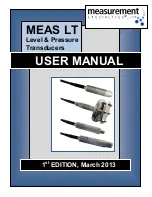
components than it is to calculate zero-sequence components. Diversity of operation
principles integrated in the same protection function enhances the overall
performance without a significant increase in cost.
A novelty in GENPDIF, namely the negative-sequence-current-based internal-
external fault discriminator, is used advantageously in order to determine whether a
fault is internal or external. Indeed, the internal-external fault discriminator not only
positively discriminates between internal and external faults, but can independently
detect minor faults which may not be ascertained (until they develop into more serious
faults) by the "usual" differential protection based only on operate-restrain
characteristic.
GENPDIF is using fundamental frequency phase current phasors and negative
sequence current phasors. These quantities are derived outside the differential
protection function block, in the general pre-processing blocks. GENPDIF is also
using with advantage the DC component of the instantaneous differential current and
the 2
nd
and 5
th
harmonic components of the instantaneous differential currents. The
instantaneous differential currents are calculated from the input samples of the
instantaneous values of the currents measured at both ends of the stator winding. The
DC and the 2nd and 5th harmonic components of each separate instantaneous
differential current are extracted inside the differential protection.
6.3.7.1
Function calculation principles
To make a differential protection as sensitive and stable as possible, the restrained
differential characteristic is used. The protection must be provided with a proportional
bias, which makes the protection operate for a certain percentage differential current
related to the current through the generator stator winding. This stabilizes the
protection under through fault conditions while still permitting the system to have
good basic sensitivity. The following chapters explain how these quantities are
calculated.
The fundamental frequency phasors of the phase currents from both sides of the
generator (the neutral side and the terminal side) are delivered to the differential
protection function by the pre-processing module of the IED.
6.3.7.2
Fundamental frequency differential currents
The fundamental frequency RMS differential current is a vectorial sum (that is, sum
of fundamental frequency phasors) of the individual phase currents from the two sides
of the protected generator. The magnitude of the fundamental frequency RMS
differential current, in phase L1, is as calculated in equation
:
2
2
_ 1
[(Re( 1
1 ))
(Im( 1
1 )) ]
Idiff L
IL n IL t
IL n IL t
=
+
+
+
EQUATION2316 V2 EN
(Equation 25)
1MRK502052-UEN B
Section 6
Differential protection
151
Technical manual
Summary of Contents for Relion REG670
Page 1: ...Relion 670 series Generator protection REG670 2 0 IEC Technical manual ...
Page 2: ......
Page 44: ...38 ...
Page 58: ...52 ...
Page 80: ...74 ...
Page 106: ...100 ...
Page 482: ...476 ...
Page 548: ...542 ...
Page 570: ...564 ...
Page 600: ...594 ...
Page 608: ...602 ...
Page 630: ...624 ...
Page 862: ...856 ...
Page 1094: ...1088 ...
Page 1226: ...1220 ...
Page 1250: ...1244 ...
Page 1297: ...1291 ...
















































